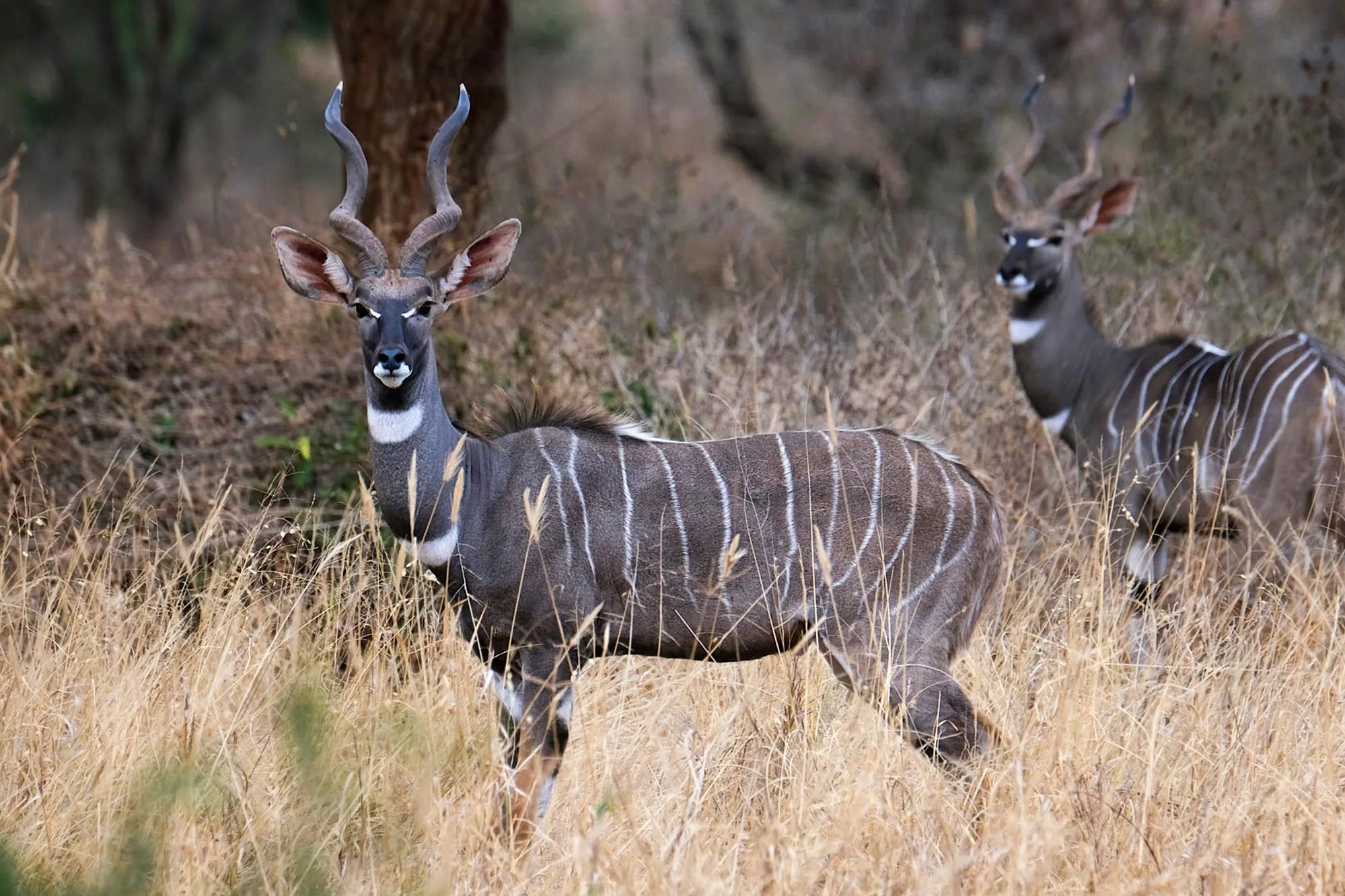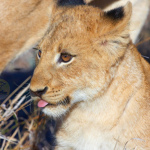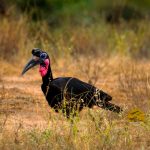Unraveling the Mystery of the Lesser Kudu: Investigation into the Existence and Conservation Status within Uganda.
Lesser Kudu in Uganda (Tragelaphus imberbis); Often celebrated for its diverse landscapes and abundant wildlife, Uganda has a home to a fascinating array of species, including the elusive Lesser Kudu. This strikingly beautiful antelope, marked with spiral horns and a characteristic marking, propels into the rich tapestry of natural heritage which Uganda possesses. In this paper, we discuss the lesser kudus of Uganda, touching briefly on habitat, behavior, and conservation efforts to secure their existence.
Physical Characteristics of the Lesser Kudu.
Lesser kudu is a medium-sized antelope that has a reddish-brown coat with white vertical stripes on the flanks. Both males and females have outstanding spiraled horns; however, those of the male are longer and more narrowly spiraled. This unique feature makes it appealing to many tourists’ eyes and photo cameras.
Where to See the Lesser Kudu in Uganda.
The Tragelaphus imberbis is an antelope class of the forest, mostly found in East Africa. In Uganda, they occur in several areas, especially in the protected areas like Pian Upe Game Reserve, Kidepo Valley National Park, and Semuliki National Park. It prefers thick woodland, thicket, and acacia savannah where cover and browse are available.
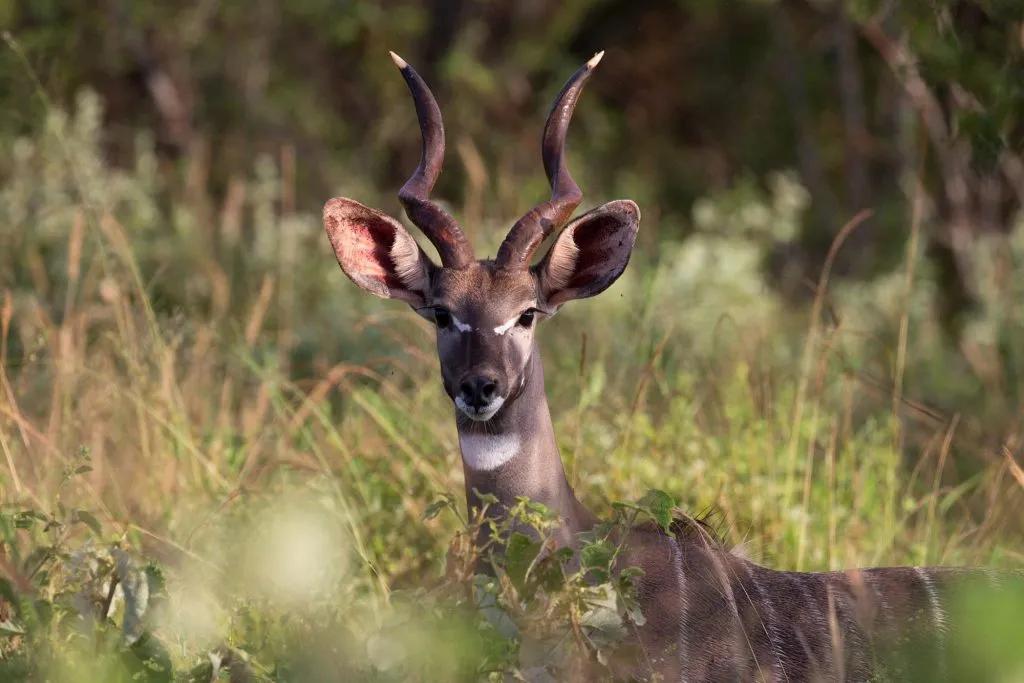
Behaviour and Diet of Lesser Kudu.
Lesser kudu are very wary and seldom seen; they are mainly crepuscular, which ultimately allows them to avoid many of their natural predators, like lions and leopards. They are browsers that feed on leaves, shoots, fruits, and flowers. Because of their ability to adapt to such varied diets, they can range across different habitat types.
Conservation Efforts in Uganda.
Being part of the commitment toward biodiversity conservation, a number of efforts have been done toward protecting Tragelaphus imberbis and its habitat. National parks and reserves provide a suitable place for sheltering these antelopes. Programs for conservation cover habitat preservation, anti-poaching, and community-based conservation mechanisms harmonious between humans and wild animals.
The Uganda Wildlife Authority (UWA) cooperates with various local and international organizations in monitoring the populations through studying and implementing various conservation strategies. These have included establishing wildlife corridors, community-based conservation projects, and educating through awareness programs on the need for preserving the lesser kudu and its ecosystem.
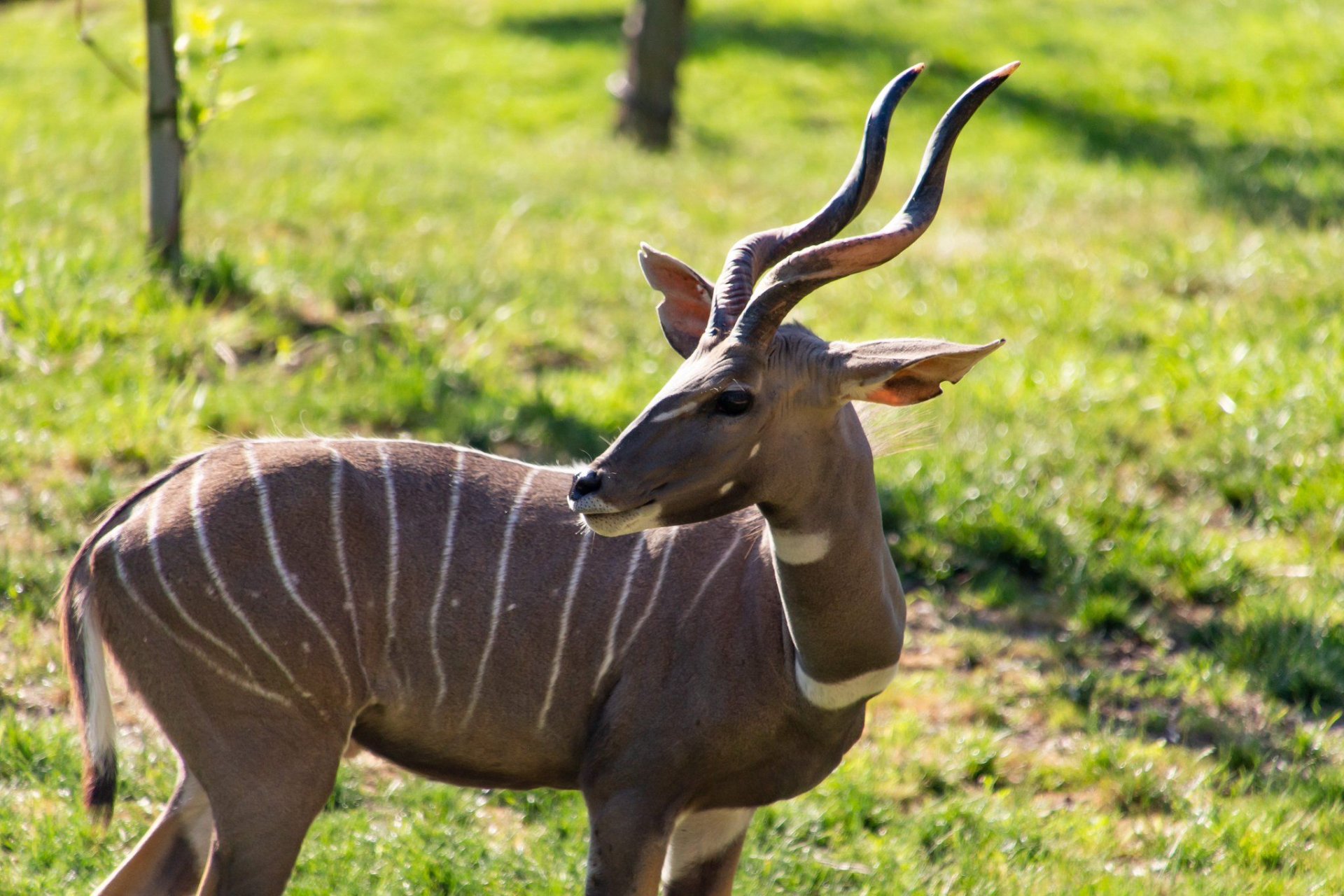
Conservation Threats in Uganda.
Although the Tragelaphus imberbis is not currently listed as an endangered species, several threats identify it as a species meriting interest from the perspective of nature conservation. Their habitats are seriously threatened by human encroachment, agriculture, and logging. Illegal hunting and poaching for meat and horns continue to reduce their number further.
Remarks on Lesser Kudu in Uganda
This lesser kudu, with its appealing look and interesting manners, is a part of this ecological diversity, making Uganda a haven for people interested in wild life. At the same time, despite many challenges, the conservation efforts that take place epitomize the commitment to save this and many such species along with their habitats. Combining sustainable practices, community involvement, and international cooperation, Uganda strives to make sure future generations get a glimpse of Tragelaphus imberbis with their beauty in their natural habitat.


